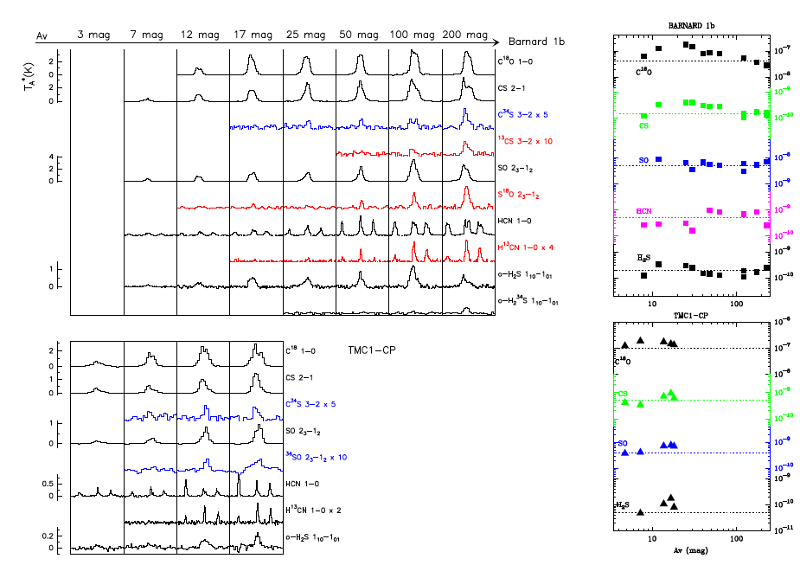
|
EPoS |
|
EPoS Contribution
|
|
Gas phase Elemental abundances in Molecular cloudS (GEMS)
Asuncion Fuente OAN, Madrid, ES | |
| Simulations with an increasing level of complexity are being developed to model the chemistry and dynamics of collapsing clouds. The pioneering one-dimensional models have been overtaken by three-dimensional magnetohydrodynamical (3D-RMHD) codes coupled with full gas-grain chemistry to simulate the complex process of cloud collapse. But all these sophisticated simulations share the problem of the uncertain initial conditions (turbulence, ionization degree, elemental abundances, magnetic field, geometry). Until now, most simulations adopt standard values that do not properly account for the different environments and star formation modes (isolated vs clustered). GEMS is a IRAM 30m large program aiming at determining the S, C, N, O elemental abundances and the gas ionization fraction as a function of visual extinction in a selected set of prototypical star forming regions. These initial parameters determine the cloud evolution and star formation activity and, hence, are the essential ingredients of any 3D-R(M)HD simulations. First results on TMC1 (TMC1-CP, TMC1-NH3 and TMC1-C2) and Barnard 1 suggest the existence of two chemical regimes in molecular clouds. For Av < 10 mag, the chemistry is dominated by the environment, mainly the incident UV field. For Av > 10 mag, the rapid freeze-out of molecular species on the icy mantles can explain the observed chemical changes. These observations are confronted with state-of-the art photodissociation (PDR) chemical codes, which include gas phase and surface chemistry, to determine the elemental gas phase abundances and their variations across the cloud. | |
 | |
| Caption: Left: Spectra obtained during our pilot project in Barnard 1b and TMC1-CP averaged in ranges of visual extinction. Right: Molecular abundances estimates for the same cuts. Note that we have used all the observed points here (without averaging). Comparing the Av < 10 mag range of visual extinction in Barnard 1b and TMC1-CP, we observe significant differences in the abundances of most species (see e.g. C18O, CS and sO). This is interpreted as the consequence of the different environment. | |
| Collaborators: D. Navarro, OAN, ES M. Gerin, IAP-LERMA, FR P. Caselli, MPE, GE J. Cernicharo, ICMM, ES C. Kramer, IRAM, FR E. Roueff, Meudon, FR V. Wakelam, U Bordeaux, FR J. Pineda, MPE, DE P. Riviere-Marichalar, ICMM, ES J.C. Loison, U Bordeaux, FR M. Agundez, ICMM, ES T. Alonso, OAN, ES R. Bachiller, OAN, ES B. Commercon, U. Lyon, FR R. Friesen, U. Toronto, CA S. Garcia-Burillo, OAN, ES B. Giuliano, MPE, DE J.R. Goicoechea, ICMM, ES P. Gratier, U. Bordeaux, FR A. Hacar, Leiden, NL I. Jimenez-Serra, QMUL, UK J. Kirk, UCLAN, UK J. Laas, MPE, DE V. Lattanzi, MPE, DE B. Lefloch, IPAG, FR J. Malinen, U Cologne, DE N. Marcelino, ICMM, ES R. Martín-Domenech, CFA, US G. Munoz-Caro, CAB, ES O. Roncero, IEM-CSIC, ES M. Tafalla, OAN, ES B. Tercero, OAN, ES S. Trevino-Morales, Onsala, SW T. Vidal, U Bordeaux, FR D. Ward-Thompson, UCLAN, UK |
Key publication
Suggested Session: Chemistry |